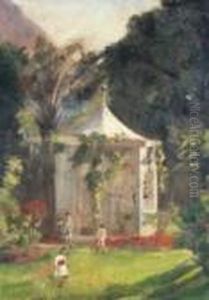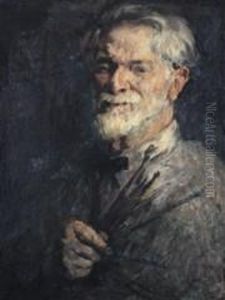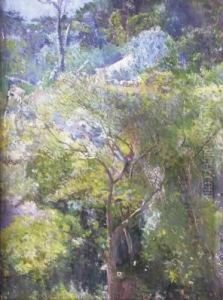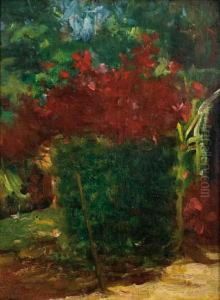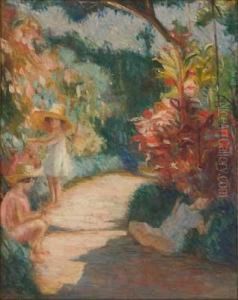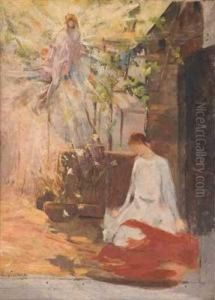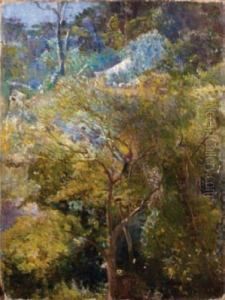Eliseo Visconti Paintings
Eliseo d'Angelo Visconti is a significant name in the history of Brazilian art, known for his contributions to both the Art Nouveau movement and the introduction of modernist aesthetics in Brazil. Born on July 30, 1866, in Giffoni Valle Piana, Italy, Visconti's family emigrated to Brazil when he was still an infant, and he would come to regard Brazil as his homeland.
Visconti demonstrated an early talent for art, which led to his enrollment at the Imperial Academy of Fine Arts (Academia Imperial de Belas Artes) in Rio de Janeiro. There, he was trained under prominent artists of the time and was deeply influenced by the academic painting style prevalent in Brazil. His skills earned him awards and scholarships, including a much-coveted prize which granted him the opportunity to study in Paris in 1884.
In Paris, Visconti attended the École des Beaux-Arts and the Académie Julian, where he was exposed to new artistic movements that were sweeping across Europe at the end of the 19th century. He absorbed elements of Art Nouveau and later on, during his extensive career, he also embraced aspects of Impressionism and Post-Impressionism. His work began to exhibit a unique blend of European modernist aesthetics with Brazilian subjects.
Visconti's oeuvre is diverse, including paintings, drawings, and designs for stained glass windows. His public commissions in Brazil brought him significant recognition, such as the decoration of the ceiling of the Municipal Theatre in Rio de Janeiro, which remains one of his most celebrated works. He also designed the curtain of the theatre and several panels for the foyer. In the realm of painting, his works often feature landscapes, portraits, and historical themes, executed with a refined technique and a sensitivity to light and color.
Despite spending many years in France, Visconti maintained strong ties with Brazil throughout his life. He played a pivotal role in the introduction and development of modernist art within the country, participating in exhibitions and serving as an inspiration to a younger generation of Brazilian artists.
Eliseo Visconti passed away on October 15, 1944, in Rio de Janeiro. His legacy endures in the form of his artworks, as well as his influence on Brazilian art, which marked a transition from the academic traditions of the 19th century to the modernist expressions of the 20th century. Visconti is remembered not only as an artist who bridged two cultures but also as an innovator who helped pave the way for modern art in Brazil.
